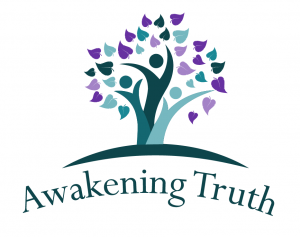Confessions of an avid meditator

I remember it vividly. I was sitting on the edge of my chair exhilarated. I entered a class on Buddhism in 1979. I was listening to Jack Engler tell stories of meditation masters he knew. The level of peace, joy and love they lived with seemed out of reach, not humanly possible. Yet, he was sharing stories about real people and situations he witnessed. I was gripped. I knew then, at the ripe age of seventeen, that I wanted to give my life to the pursuit of freedom. A month later I had a vision of being a nun. This vision, combined with my passion for truth, propelled me into Buddhist monastic life for 28 years.
All of my blood ancestors are Jewish. Jewish culture has never had monastics. I’ve often wondered, was it spiritual precociousness that led me into a deep immersion of spiritual practice? Was it a karmic ripening from a previous life that propelled me into something that I had no cultural context to know about? Was my determination part of an unconscious strategy to resolve trauma I didn’t know existed?
In hindsight, I suspect all of these motivations were playing a part.
Let’s shift to the Buddha’s teachings and map them onto the human experience of suffering. The Buddha taught the Four Noble Truths, with the first truth being that there is suffering. The Buddha himself said that all of his teaching could be summarized as the teaching of suffering and the end of suffering. Yet, he didn’t talk about trauma. He talked about the suffering of physical illness, aging and death. He spoke about the impact of physical pain and painful mind states like restlessness, doubt, desire for sense pleasure and anger. He described the unsatisfactoriness that even pleasant things change and cannot be relied upon.
When we look at suffering, we can see there is a continuum from the most severe to the ordinary suffering that we all experience, to the most subtle suffering only the most spiritually mature beings describe. When we look at the most severe kinds of human suffering, we find trauma.
There are many different kinds of trauma. It can be situational, systemic, epigenetic , vicarious, developmental and compound.
Let’s go into each of these kinds of traumas and see how they apply to the larger picture of the Buddha’s teaching on suffering and the ending of suffering.
Situational traumas can be specific incidents such as an accident, invasive medical procedure, a natural disaster, a single event of abuse or ongoing abuse. It can be chronic in the case of a war, prolonged states of poverty or repeated events caused by climate chaos.
Systemic trauma is when the experience of overwhelm, hatred, lack of safety is perpetuated by cultural systems and policies. Beliefs that are enforced by communities and policies target micro and macro aggressions based on certain characteristics of identity.
Epigenetic trauma leaves a chemical mark on a person’s genes which is then passed down from one generation to another.
Vicarious trauma happens when witnessing someone else’s trauma or by being nearby helping support another as they are processing trauma. Vicarious trauma is an occupational hazard for certain first responders and health care professionals.
Developmental trauma can happen when the basic needs of an infant or young child are not met reliably enough. Except for disorganized attachment, the other types are called attachment disturbances and are not technically considered traumas. Though for simplicity’s sake, I include all attachment disturbances in this overview.
Compound trauma occurs when two or more of the above traumas combine.
When we look at the Buddha’s teaching on suffering, he was talking about ordinary suffering, not the kinds of suffering present in trauma.
Just reading all of this is a lot. I invite you to pause. Look around the room. Look over one of your shoulders. Then slowly turn your head and look over the other. Now look again and notice the absence of danger around you. When you notice the absence of scary people, scary things, scary smells in your immediate space and behind your back, what do you notice in your body? What happens? It’s good to take time and notice that you are safe. It helps to metabolize the impact of all of this intense stuff.
The Second Noble Truth says the real suffering wasn’t the pain, aging, death or that the things we love change, it is our desire for the pain, impact of aging and the reality of death, the reality that what we love changes not to be there, for it to be otherwise. In turning towards our desire for it to be otherwise, the resistance can release. In releasing resistance, even when the unpleasant situation remains, peace can be found. The release of this resistance to suffering is the Third Noble Truth.
Yet, when we look at trauma, our nervous systems go into a flight, fight or freeze response. We can’t turn towards the resistance of not wanting something to be there, because our nervous system is jammed. Furthermore, with most trauma it is potentially harmful to suggest that turning towards the resistance of the pain is all that is needed to find peace. Usually, finding safety is needed first. Unjamming the nervous system second. Then, there may be the possibility to look at other teachings to find peace.
I share a story of Patachara during the Buddha’s lifetime. She was born to wealthy merchants and eloped with her lover. At the birth of her second child, multiple tragic circumstances happened in one day; she lost her husband, her two children including her new born baby and both of her parents. When the Buddha found her, she was so overwhelmed with grief, she was running naked down the street screaming. We don’t know what the Buddha said or did. All we know is that in the Buddha’s presence, she stopped wailing and put on clothes. In my reading into it, not only did she stop screaming and put on her clothes, signs she was following social norms, but it looks like she came out of a trauma response and she was calmed in the Buddha’s presence. This was all essential before she could consider the teachings. Once she had come out of a trauma response she was able to contemplate that nothing lasts. Only then did she experience peace.
Let’s look at a hypothetical woman, Joy. As a teenager Joy was raped. We learn that Joy’s mother was also molested as a teenager and didn’t have adequate support as a child. When Joy was growing up, her mother was not able to protect her and Joy grew up not feeling safe. Now let’s look at the culture Joy was living in. The culture valued men over women, men’s pleasures over women’s safety, power over, rather than presence with. Public policies and media supported rape culture. In this hypothetical example we can see Joy’s compound trauma as situational, epigenetic, developmental and systemic trauma nested together.
Joy is a meditator. She knows how to focus her attention. She knows how to use that focus to soothe herself. Sometimes she turns her attention to simple pleasures- a child’s smile, bird’s song, the gratitude for good friends, the sensations of walking, and kindness and compassion. Even when dysregulated, she remembers her suffering won’t last. Further, Joy’s meditation shows her that she is a lot more than her thoughts, feelings, sensations and the things that she has experienced. On good and bad days, Joy keeps alive the question, ‘what is needed now?’
Now what if I told you Joy is not a hypothetical woman? I am Joy.
Let’s pause. What happens when you let in the truth of my experience? What is present in your body? Heart? What impact does it have for you as you begin to parse how you have been dealing with the traumas of your own life and how your spiritual practice has helped or not helped you? Take as long as you need before continuing.
Meditation has been invaluable to me over these many decades. It would be hard to list all of the tools, supports and insights it has offered me. Yet as invaluable as it’s been, by itself it didn’t help me learn to notice when my overwhelm was taking me out of my window of tolerance, shift my focus then to notice pleasant experiences as a way to stay present with what was happening and not disassociate. Meditating didn’t help me understand why my tendency is to freeze. Nor did it help me identify and defend against micro and macro aggressions living in this world as a woman. Meditation didn’t help me see the pattern of trauma passed on by my ancestors. Meditation didn’t help me differentiate between the dark night of the soul, the natural fear before opening to liberating insights and the terror of a trauma activation. It didn’t show me how I was using meditation to solidify attachment patterns that no longer served me. Nor did meditation help me discern when turning towards pain wasn’t helpful. What helped me were all of the ways that ‘hypothetical’ Joy benefited from meditation. Being able to focus, soothe myself, keep things in perspective by remembering that what I am isn’t limited to the painful experiences I have experienced and that still may be in my nervous system.
I used confessions in the title deliberately. For decades I lived with shame because I sought out more support than classical meditation tools provided. My belief came from what was said explicitly and inferred implicitly; meditation should be enough. In several cases in the Buddhist community I lived for decades, those who sought support outside of the tools provided by classical meditation were shamed.
Blaming ourselves for not meditating correctly or concluding that mediation isn’t valuable are both unhelpful conclusions. The real issue is that when we presume meditation is able to do something it was never designed to do, we are setting ourselves up for disappointment.
Releasing ordinary suffering and releasing trauma require different tools. Attachment trauma and distrubances are one of the many different kinds of trauma. The next two blog posts: Meditation and Attachment Part One Meditation and Attachment Part Two both discuss attachment repair in more depth. When attachment disturbances repair, we have a foundation of reslience from which the other forms of trauma can release more readily. For these reasons, I have interest in creating an attachment repair process to further support us to accept what cannot heal and heal what can.
If more information about attachment repair interests you, please visit our Integrated Meditation page to learn more about the healing work that Awakening Truth is offering.
Awakening Truth Newsletter!



 Amma Thanasanti
Amma Thanasanti





